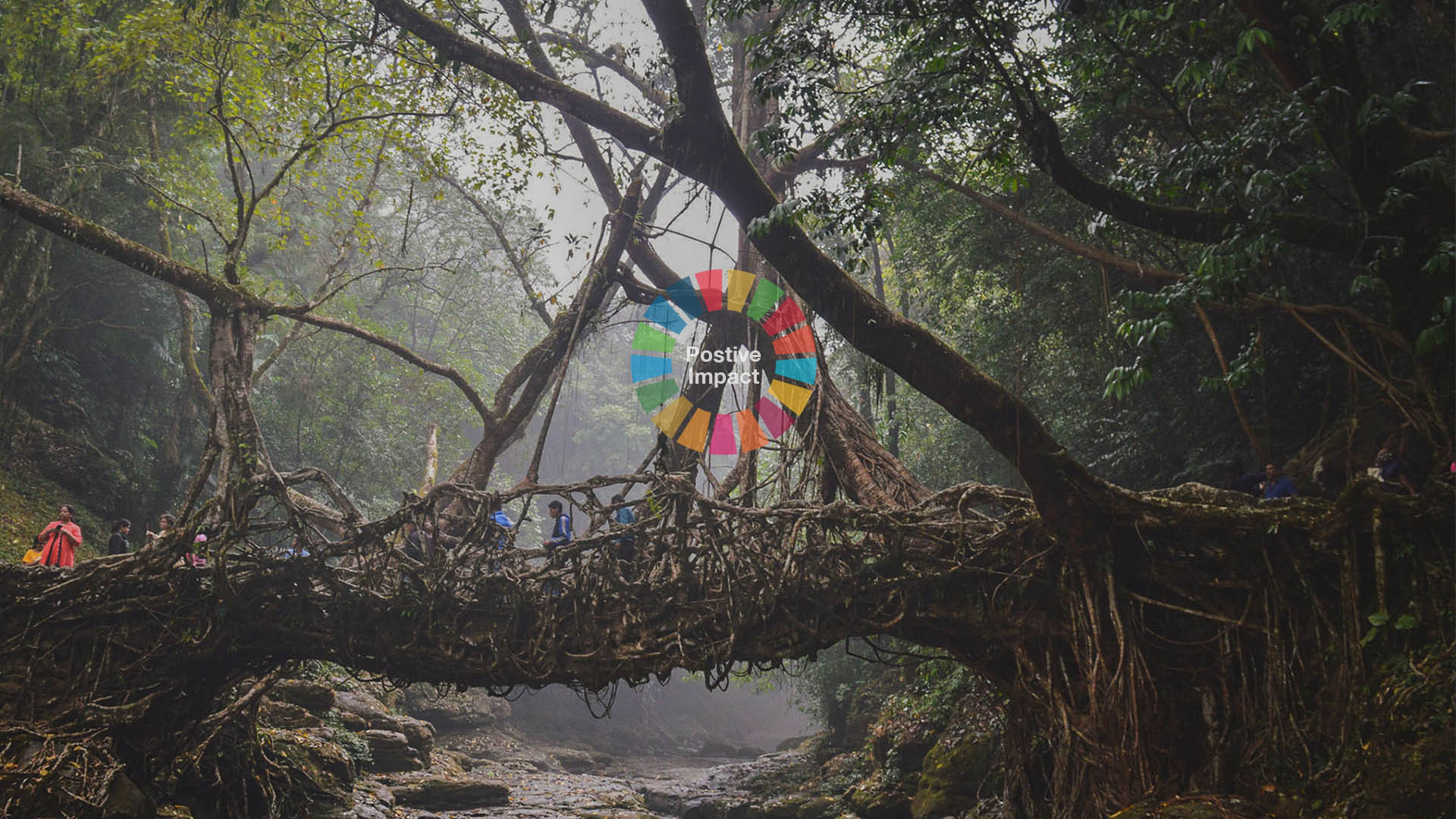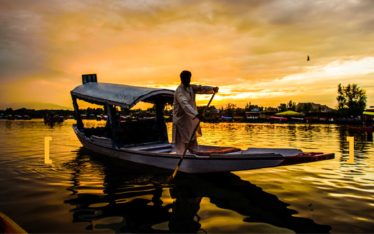


Necessity is the mother of all inventions. The astonishing root bridges of Meghalaya were not built by the local tribesmen so that one day a dollar doling tourist would come across it and announce their exotic existence to the world. Instead, the tribesmen must have figured out the way to make these bridges out of ‘live’ tree roots to facilitate travel over the various fast-flowing streams across the lower slopes of Khasi & Jaintia hills in the absence of any government aid or support. This further proves that Gandhiji’s vision of an India made of innumerable villages was the right one as compared to the urban mess that we have created out of our large cities. More on this later…
Coming back to the root bridges, the story actually begins when one lands at Shillong’s ‘now connected’ Umroi airport (under the government’s new UDAN scheme of connecting tier II and III city airports) and heads to the magical town of Cherrapunjee or the beautiful village of Mawlynnong. While Cherrapunjee is often dubbed as the wettest place on this planet, Mawlynnong has been given the title of being the cleanest village in India. The choices here are aplenty. As in you can choose to stay at Cherrapunjee or Mawlynnong and explore the Khasi hills right from the womb of the mountains or you can choose to take a day trip from Shillong and explore the root bridges and get back to semi-urbanity by nightfall.
The root bridges of Meghalaya can rightly be sighted as man’s most intimate collaboration with nature. It was an observation credited to the people belonging to the War sub-tribe of the Khasis. They noticed that roots of a particular species of the Indian rubber tree (Ficus Elastica) would clasp on the surrounding rocks because of the fast-flowing streams that caused constant soil erosion. These roots would also secure the tree to the ground by fastening themselves all the way to the riverbed. The Khasis used this quality of the rubber tree roots and channeled them through hollow trunks of betel trees that directed the growth of the roots in the direction of the bank on the other side. Once the slender roots reached the other side of the bank, they were infused into the soil and allowed to penetrate into its depths. The roots were then cobbled with stones converting them into beautiful pathways. Side railings were then attached to the structure. The roots strengthened over a period of time and usually became operational within a period of ten to fifteen years. But unlike the concrete stuff, these bridges grow stronger with time.

Double Decker Root Bridge
The Mecca of all the root bridges is the double-decker root bridge for which the traveller needs to undergo a tiring trek of about two hours and which involves a steep descent of 2400 feet via a series of intricately built 3500 steps. The trek starts at Tyrna village and the steepest part of the walk concludes within the first 45 minutes at Nongthymmai Village post which the journey is less taxing and more spectacular that involves the crossing of two narrow steel suspension bridges over fast-flowing rivers. The height of these bridges will enthral you and it will be a daunting task for those who fear heights. And then appearing from within the clouds, you’ll come across a blackboard hung on the bark of a tree with the words ‘Nongriat Village’ written on it. Nongriat is the home of the Double-Decker root bridges. The settings are surreal and straight out of a fable reminding you of movies such as Avatar and Lord of the Rings. Once at the spot, you’ll want to stay there forever such is its effect on the tired body but a refreshed soul. The upper arm of the Double-Decker root bridge was built because excessive rains had made it difficult to use the lower arm. The locals are now planning a third are purely for the purpose of tourism. It’s a delight to be here but then you’re reminded of your long trek back to the Tyrna. There is a homestay and the local community guesthouse if you wish to stay overnight.
Other popular root bridges in the Cherrapunjee belt include the Mawsaw, Umkar, and Ritymmen (en route to the Double-Decker Bridge at the Nongthymmai Village) root bridges.
Mawsaw – Half an hour further away from the Umshiang Double-Decker Root Bridge. There are natural pools in the area although diving into those pools is a dangerous proposition during the monsoons.
Umkar Root Bridge – Over Ummunoi River near Siej Village. Trek duration – 2 hours. This is a popular choice because it’s easy on the legs.

Living Root Bridge Mawlynnong
Another great destination if you wish to find an alternative to Cherrapunjee. The village has its own community guest house and its people welcome travellers with open arms and bright smiles. The village calls itself a ‘garden village’ because its spic n’ span premises are evenly manicured with not a single waste paper or any other form of garbage visible. The Khasis are very protective of their natural surroundings and even the act of relieving yourself outside attracts a fine. Together these people are working to develop Mawlynnong as a tourist destination using sustainable means that will not harm the planet. That’s why a certain Mr. Gandhi envisioned an India made up of villages and supported by local communities.


